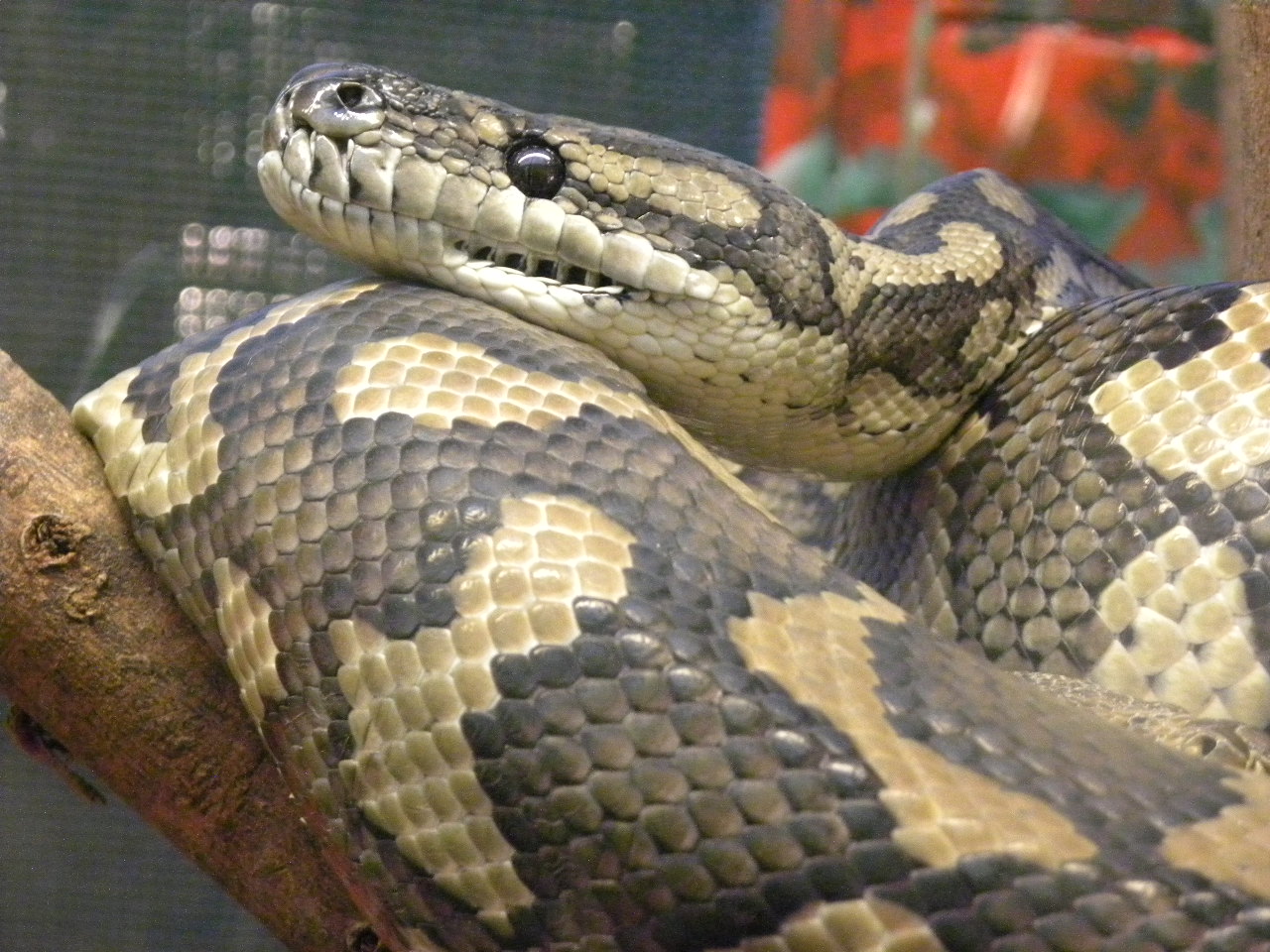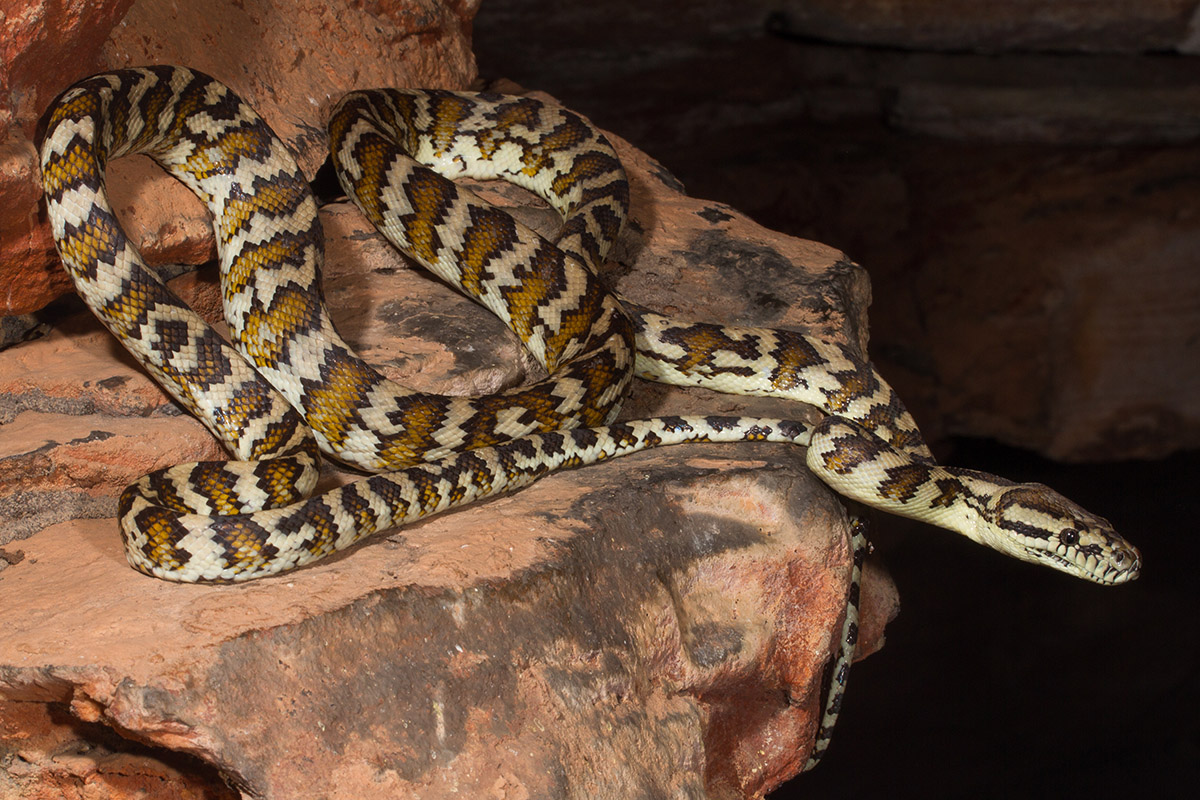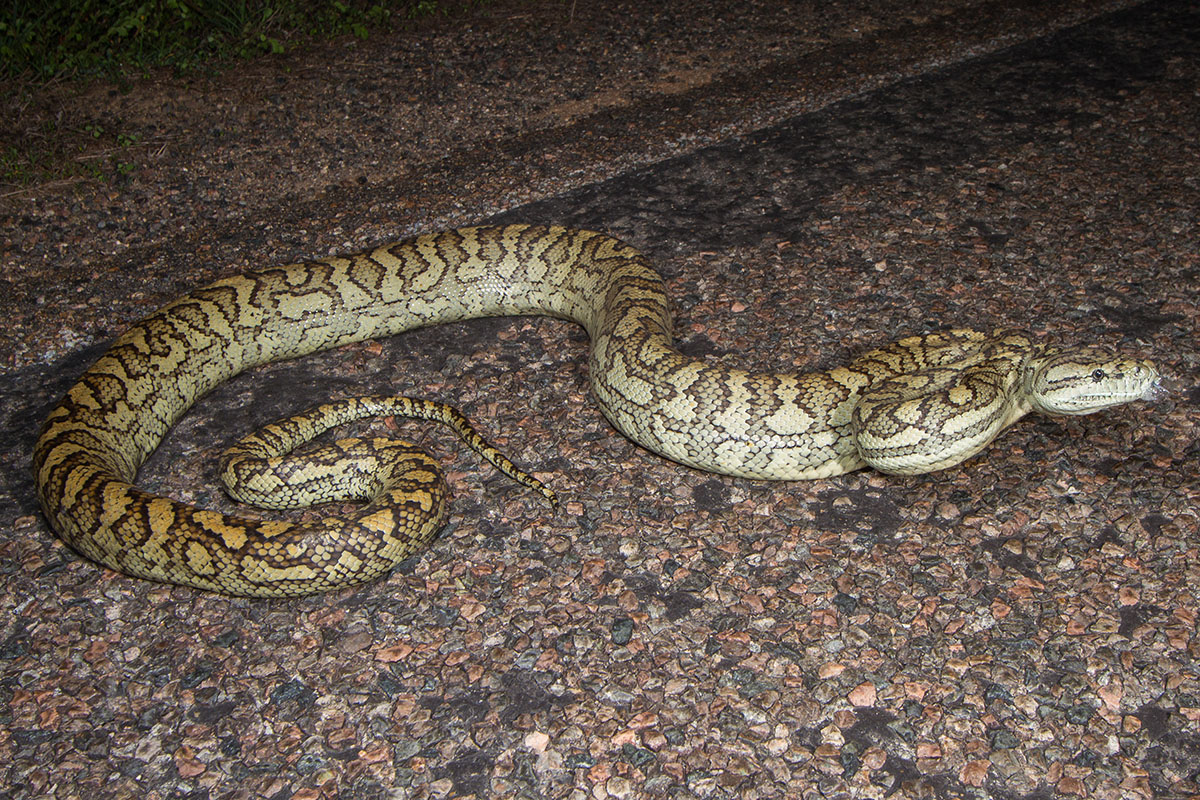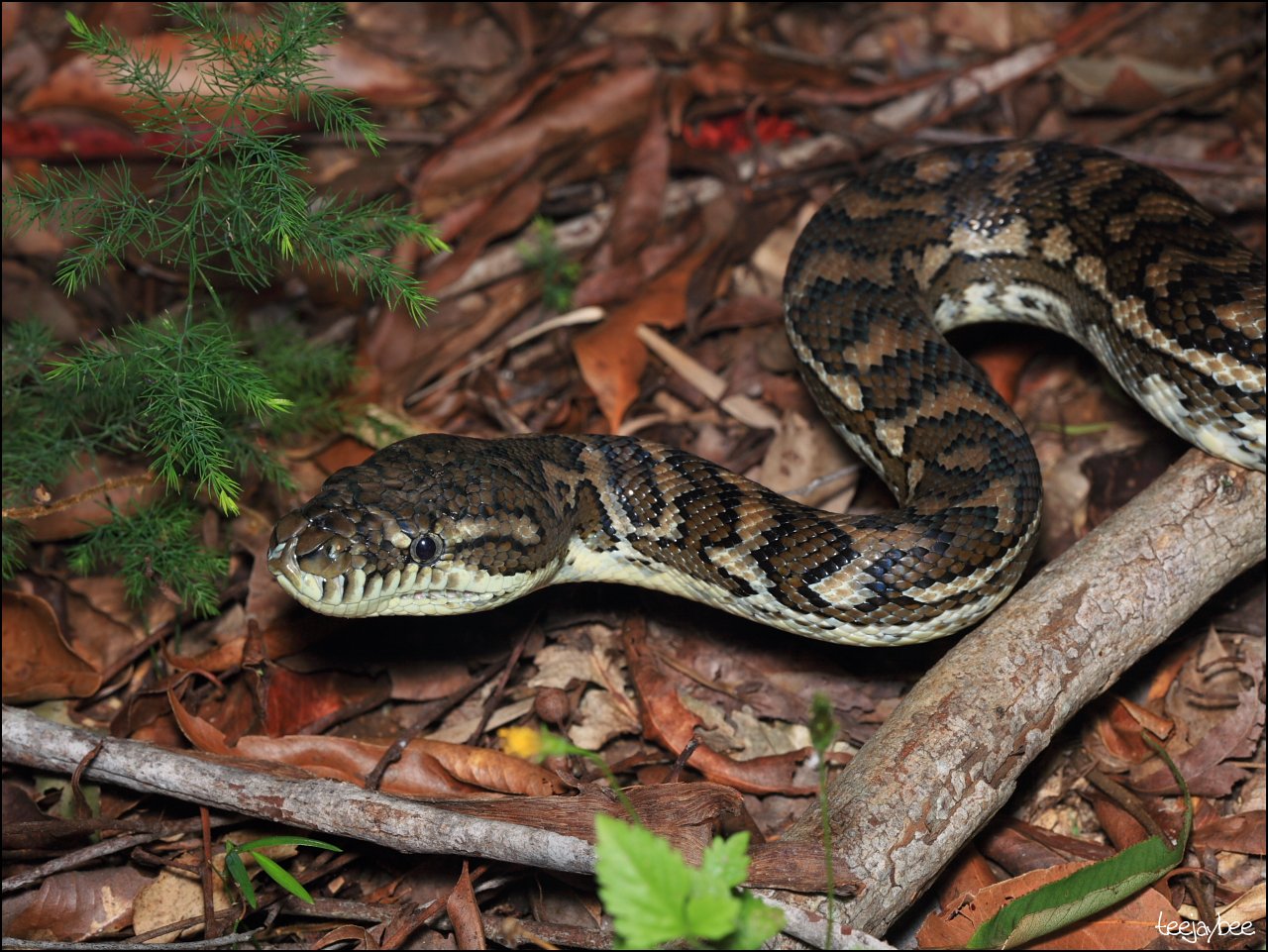Carpet pythons are extremely variable in colour and pattern (often have pale, dark-edged blotches, stripes or cross bands).
Seven geographical subspecies are recognised as carpet pythons are extremely diverse in appearance. The Northern Territory form (Morelia spilota variegat) is different from the other subspecies because it is a beige or brown colour with blackish or grey blotches and bright gold, yellow and rust colour forms in regional areas. This subspecies is about 2.5m long on average.
They have row of deep pits run along the lower jaw, and small scales present on the top of the head. This species can grow greater than 3 m in length, and although non-venomous, they possess powerful jaws and constricting capability.
Size
2 - 4 m length; 15 kg weight.
Behaviour
Diet
They feed on frogs, lizards, birds and mammals, and can often be encountered near chicken pens or barns.
Movement
Active during the day and night, often seen on the ground, in trees or buildings. Often seen on Top End roads at night especially in the Wet season (October-May).
Breeding
Females lay a clutch of 10 - 47 eggs in early summer, concealing them in sheltered sites like hollow stumps or depressions in the ground. The female will leave the nest to absorb heat and return to incubate the eggs in her pre-heated state. Eggs are white and elongated with a dry skin-like shell.
Field Guide
Improve your identification skills. Download your Carpet Python guide here!





